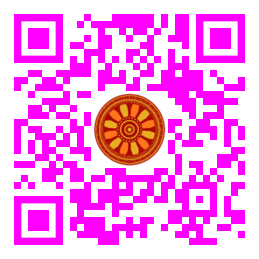
:: International Transaction Journal of Engineering, Management, & Applied Sciences & Technologies
http://TuEngr.com

ISSN 2228-9860
eISSN 1906-9642
CODEN: ITJEA8
FEATURE PEER-REVIEWED ARTICLE
Vol.12(11) (2021) |
Water Elements in Islamic Architectures
 Ahmed Abdulwahid Dhannoon(Department of Architecture Engineering, College of Engineering, University of Mosul, Mosul, IRAQ ).
Ahmed Abdulwahid Dhannoon(Department of Architecture Engineering, College of Engineering, University of Mosul, Mosul, IRAQ ).
Disciplinary: Architecture (Islamic-Architecture, Traditional Architecture).
doi: 10.14456/ITJEMAST.2021.211
Keywords: Arab architecture; Feng shui; Architecture of water; Water element in courtyards; Islamic Gardens; Salsabeel; Muslim architecture; Water element in mosque; Decorative water element
AbstractIslamic-Architecture is characterized by the distinctive employment of the water element in buildings. This essential element, which is used for sustaining life in the desert, the home of the first Muslims, has profound impacts on the design of Islamic houses and buildings, especially those that are related to performing religious rituals such as ablution in mosques and schools in addition to climatic, design, aesthetic, and symbolic functions. This research aims to identify the variables of employing the water element in the buildings of Islamic-Architecture and to discover the variation of this employing between them. This study employed secondary data by reviewing previous studies and identify the main variables that were used in designing the visual observation sheet of the cases. The cases are selected from various functional types in Islamic-Architecture. The results show the importance of the function, location, type, shape, frequency, and decorative addition to use the water element in the Islamic building. This study confirms that the water element is one of the essential elements in Islamic architecture, which reflects the functional, religious, and aesthetic aspects.Paper ID: 12A11A
Cite this article:
Dhannoon, A. A. (2021). Water Elements in Islamic Architectures. International Transaction Journal of Engineering, Management, & Applied Sciences & Technologies, 12(11), 12A11A, 1-13. http://doi.org/10.14456/ITJEMAST.2021.211
References
- Al-Omary, A. Y., & Hamodat, A. A. (2014, December). Water in Landscape Design, its Effect on the Placemaking. Al-Rafidain Engineering, 22(2), 97-117.
- Al-Rihawi, a. (1979). Al imara al Arabia al islamia, Khasaesuha wa Aatharuha fi Syria. Damascus, Syria: Ministry of Culture and National Guidance.
- Al-Rihawi, A. (2000). Qimm Ilamia fi Turath Al hadara al Arabia al islamia al memaree wa al fanee. Damascus, Syria: Press and Ministry of Culture.
- Clark, E. (2011). The Art of Islamic Gardens (1 ed.). (O. S. Al-Ayoubi, Trans.) Abu Dhabi,United Arab Emirates: Abu Dhabi Authority for Culture and Heritage (Kalima).
- Dalu, J. (1978). “ The Elements of Decoration :Suface, Pattern and Light”,from” The Architecture of the Islamic World, Its History and Social Meaning”. (G. Michell, Ed.) London: Thames and Hudson.
- El Shakhs& Ezzat, A. (2018). Water in Islamic Architecture: Study of The Water Dispesary. Journal of Architecture and Art and Humanistic Science, 1.
- Jah, S. A. (2014). "Enigma del agua Al-Andalus" Arabic translation "Lughis al-ma' fi al-Andlus". Abu Dhabi, United Arab Emirates: Abu Dhabi Authority for Tourism and Culture, Kalima Project.
- Maldonaado, B. b. (2008). Al imara Al andalusia, Amarat al miah (Vol. 1). (M. H. alhidad, Ed., & A. I. Menoufy, Trans.) Cairo, Egypt: Zahraa El Sharq Library.
- Migeon, G. &. (2009). Art of Islam. New york, USA: Parkstone Press International.
- Okan, B. (2009). "Treasures of Islam" Arabic translation" kunuz al islam rauaie al fan fi al al alam al islamie". (N. Nabulsi, Trans.) Lebanon , Beirut: Academia International.
- Prochazka, A. (1986). Mosques. Zurich: Muslim Arch itecture Program.
- Rizk, A. (2000). Mujam Mustalahat al imara wa al funoon al islamia. Cairo: Madbouli.
- Siddiqui, T. (2020). Incorporation of Islamic Architectural Features in Nepalese Architecture. International Transaction Journal of Engineering, Management, & Applied Sciences & Technologies, 11(9), 11A9O, 1-10.
- Stirerlin, H. (2009). Islam from Baghdad to cordoba, Early Architecture From The 7Th To The 13Th Century. China: Taschen.
- Tayib, A. Y. (1989). "Islamic Architecture", Contribution to the Development of a methodology for the adaptation forms and function to the contemporary architectural concept. Bucharest: Institute of Architecture, Ion Mincu.
- Thwaini, A. (2005). Mujam Imarat al shoob al islamia. Baghdad: House of Wisdom.
- Yousef, W. H. (2001). Arab Architecture Court Types and its adaptation with Human Requirements. Journal of Engineering Sciences.
- Zarghami, I., Jamal al-Din, M., & Fatoorehchi, D. (2015). The Symbolic role of water in Iranian-Islamic architecture based on spirituality. European Online of Natural Social Sciences, 3(3), 121-127.
Other issues:
Vol.12(12)(2021)
Vol.12(11)(2021)
Vol.12(10)(2021)
Archives
Call-for-Papers
Call-for-Scientific PapersCall-for-Research Papers: ITJEMAST invites you to submit high quality papers for full peer-review and possible publication in areas pertaining engineering, science, management and technology, especially interdisciplinary/cross-disciplinary/multidisciplinary subjects.
To publish your work in the next available issue, your manuscripts together with copyright transfer document signed by all authors can be submitted via email to Editor @ TuEngr.com (no space between). (please see all detail from Instructions for Authors)
Publication and peer-reviewed process:
After the peer-review process (4-10 weeks), articles will be on-line published in the available next issue. However, the International Transaction Journal of Engineering, Management, & Applied Sciences & Technologies cannot guarantee the exact publication time as the process may take longer time, subject to peer-review approval and adjustment of the submitted articles.